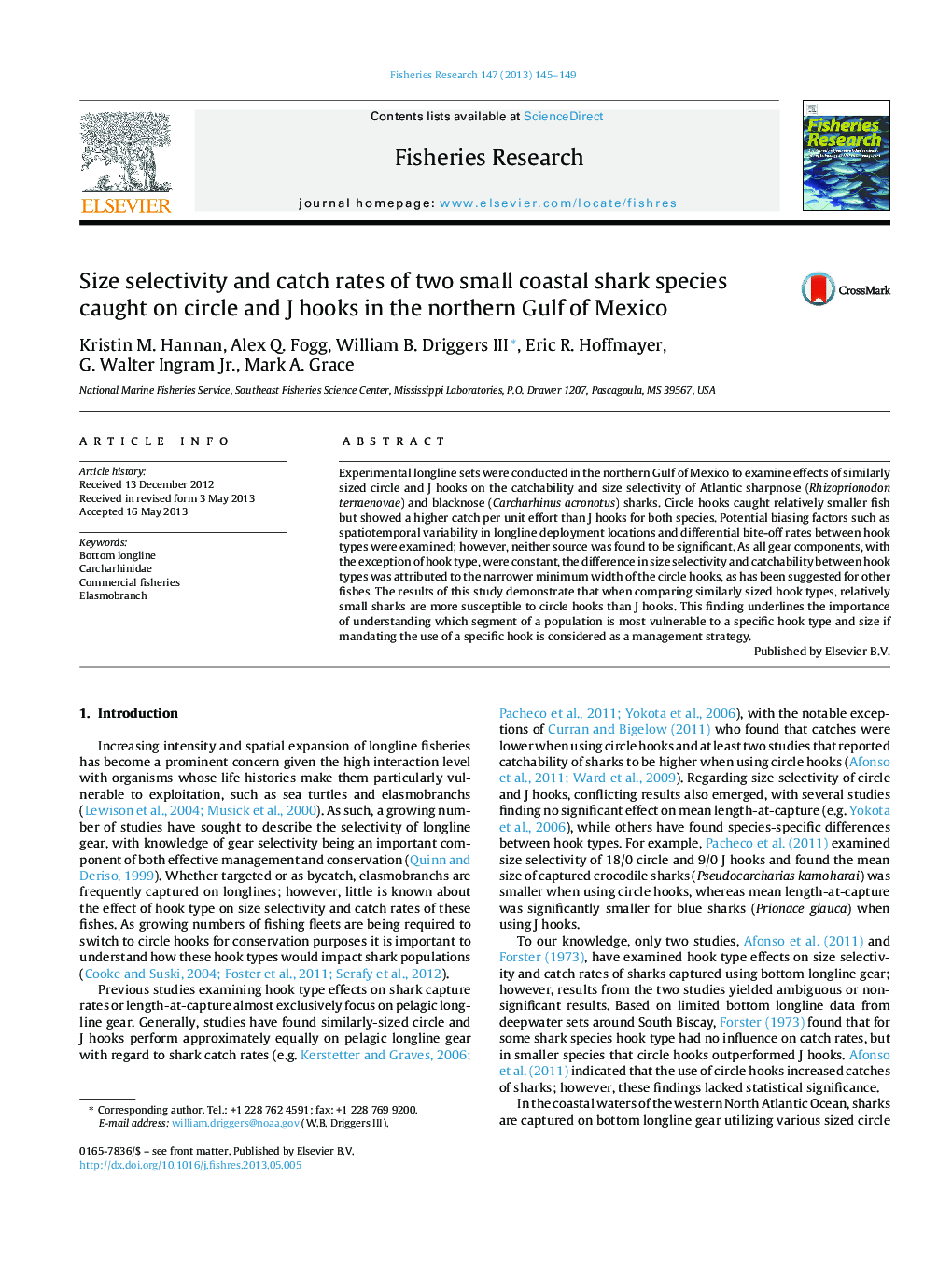| Article ID | Journal | Published Year | Pages | File Type |
|---|---|---|---|---|
| 4543089 | Fisheries Research | 2013 | 5 Pages |
•Shark size selectivity and catch rates for similarly sized circle and J hooks are examined.•Study focuses on two species of carcharhinid sharks in the Gulf of Mexico.•Smaller sharks are caught on circle hooks.•Catch per unit effort is higher when using circle hooks.
Experimental longline sets were conducted in the northern Gulf of Mexico to examine effects of similarly sized circle and J hooks on the catchability and size selectivity of Atlantic sharpnose (Rhizoprionodon terraenovae) and blacknose (Carcharhinus acronotus) sharks. Circle hooks caught relatively smaller fish but showed a higher catch per unit effort than J hooks for both species. Potential biasing factors such as spatiotemporal variability in longline deployment locations and differential bite-off rates between hook types were examined; however, neither source was found to be significant. As all gear components, with the exception of hook type, were constant, the difference in size selectivity and catchability between hook types was attributed to the narrower minimum width of the circle hooks, as has been suggested for other fishes. The results of this study demonstrate that when comparing similarly sized hook types, relatively small sharks are more susceptible to circle hooks than J hooks. This finding underlines the importance of understanding which segment of a population is most vulnerable to a specific hook type and size if mandating the use of a specific hook is considered as a management strategy.
